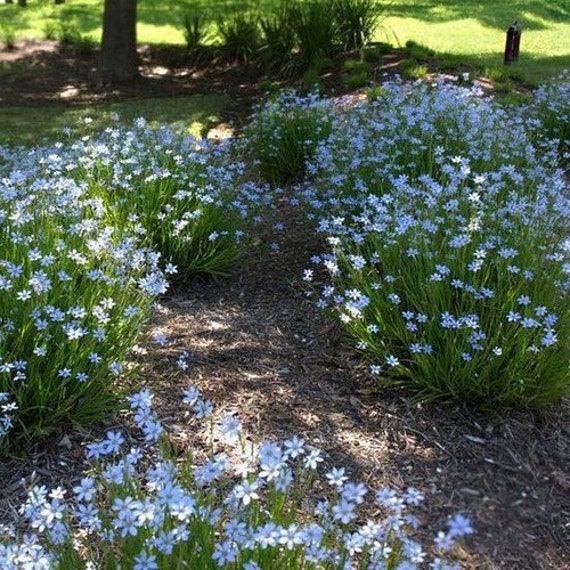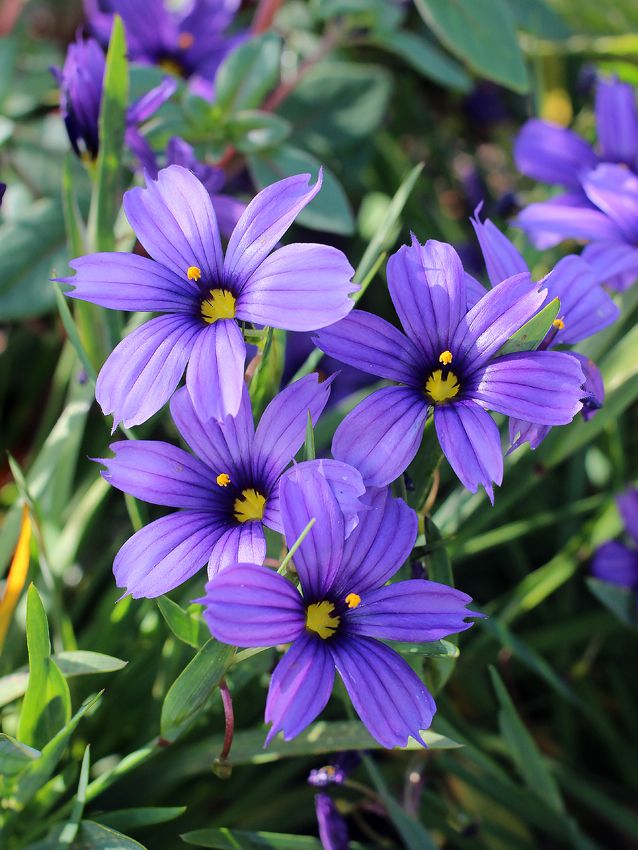Sisyrinchium bellum

Sisyrinchium bellum, commonly known as Blue-Eyed Grass, is a delightful perennial herb native to California and other western regions of North America.
With its charming blue flowers and grass-like foliage, Blue-Eyed Grass adds a touch of elegance to gardens, meadows, and natural landscapes.
In this comprehensive article, we will explore the botanical intricacies, habitat preferences, life cycle, ecological and cultural importance, conservation status, and care guidelines for Sisyrinchium bellum.
Botanical Description
Blue-Eyed Grass is a member of the iris family (Iridaceae) and typically grows to heights of 6 to 18 inches. It features slender, upright stems that emerge from tufts of narrow, grass-like leaves.
The foliage forms dense clumps, providing a graceful backdrop for the star-like flowers.
The flowers of Blue-Eyed Grass are its most striking feature, consisting of six tepals (petals and sepals that look alike) arranged in a radial pattern.
The tepals are typically blue to violet-blue in color, although pink and white varieties can also be found.
The flowers bloom in spring and early summer, attracting bees, butterflies, and other pollinators with their nectar and pollen.
Habitat and Distribution
Blue-Eyed Grass is native to a variety of habitats, including grasslands, meadows, woodlands, and coastal scrub.
It is found throughout California and extends into other western states such as Oregon, Washington, Nevada, and Arizona.
Blue-Eyed Grass thrives in open, sunny locations with well-drained soil, although it can tolerate some shade and a range of soil types.
It is often found growing in disturbed areas, along roadsides, and in meadows where it adds a splash of color to the landscape.
Life Cycle and Phenology
As a perennial herb, Blue-Eyed Grass exhibits a relatively short life cycle compared to woody shrubs and trees.
Growth typically occurs in late winter to early spring, with new leaves and flower stalks emerging from underground rhizomes or bulbs.
Flowering peaks in spring and early summer, depending on local climate conditions, with individual flowers lasting several days to a week.
After flowering, Blue-Eyed Grass may produce small, capsule-like fruits containing numerous tiny seeds.
These seeds are dispersed by wind, water, and animals, contributing to the plant's reproductive success and dispersal.
Ecological and Cultural Importance
Blue-Eyed Grass plays a valuable ecological role in its native habitat, providing food and habitat for a variety of wildlife species.
The flowers are a valuable nectar source for bees, butterflies, and other pollinators, supporting pollinator populations and promoting biodiversity.
Additionally, the foliage provides cover and nesting sites for small mammals, birds, and insects. Culturally, Blue-Eyed Grass has been admired for its delicate beauty and used in native plant landscaping, wildflower gardens, and naturalistic landscapes.
Its graceful appearance and low-maintenance nature make it a popular choice for gardens and landscapes throughout its native range.

Caring for Sisyrinchium bellum
Sunlight
Plant Blue-Eyed Grass in a location that receives full sunlight to partial shade, as it prefers abundant sunlight for optimal growth and flowering.
Watering
Water young plants regularly during the first growing season to establish a strong root system.
Once established, Blue-Eyed Grass is drought tolerant and generally requires minimal irrigation. Water deeply during prolonged dry spells, especially in inland areas.
Soil
Plant in well-drained, sandy or loamy soil with good drainage.
Blue-Eyed Grass is adaptable to a variety of soil types but prefers soil with good drainage.
Avoid heavy clay soils, which can cause root rot and other problems.
Pruning
Blue-Eyed Grass does not require pruning except to remove spent flower stalks or to tidy up the plant's appearance.
Cut back the foliage to the ground in late fall or early winter to promote fresh growth in spring.
Fertilizing
Blue-Eyed Grass generally does not require fertilization, especially in nutrient-rich soils.
If desired, apply a balanced fertilizer in spring, following the manufacturer's instructions.
Mulching
Apply a layer of organic mulch around the base of the plant to help retain moisture, suppress weeds, and insulate the roots from temperature fluctuations.
Avoid placing mulch directly against the stem to prevent rot and fungal diseases.
By following these care guidelines, you can cultivate healthy and vibrant Blue-Eyed Grass in your garden or landscape, contributing to the conservation of native plant species and the beauty of western landscapes.
Whether grown for its ecological benefits, cultural significance, or ornamental value, Blue-Eyed Grass is sure to enchant with its delicate flowers and graceful foliage.
Leave a Reply
You must be logged in to post a comment.